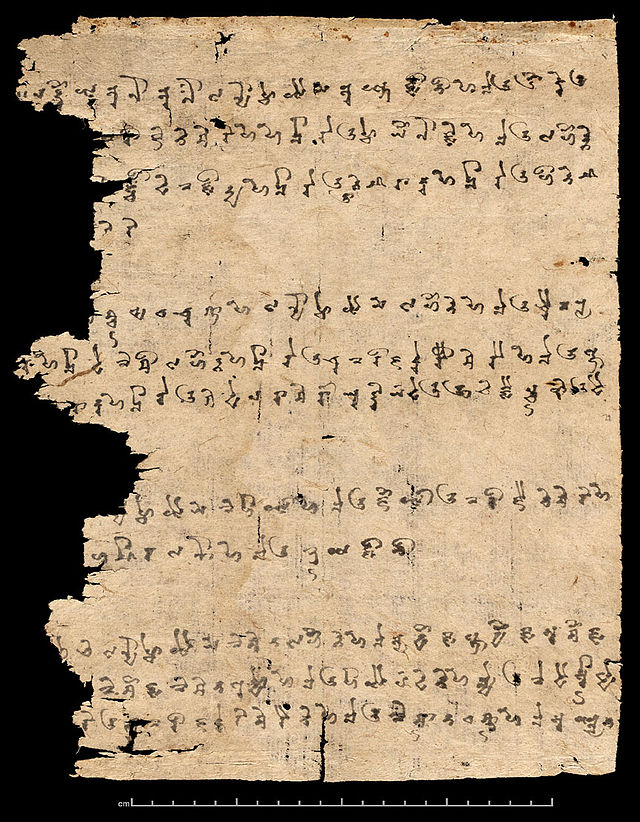Top Qs
Timeline
Chat
Perspective
Scythian languages
Group of Eastern Iranic languages From Wikipedia, the free encyclopedia
Remove ads
The Scythian languages (/ˈsɪθiən/ or /ˈsɪðiən/ or /ˈskɪθiən/) are a group of Eastern Iranic languages of the classical and late antique period (the Middle Iranic period), spoken in a vast region of Eurasia by the populations belonging to the Scythian cultures and their descendants. The dominant ethnic groups among the Scythian-speakers were nomadic pastoralists of Central Asia and the Pontic–Caspian steppe. Fragments of their speech known from inscriptions and words quoted in ancient authors as well as analysis of their names indicate that it was an Indo-European language, more specifically from the Iranic group of Indo-Iranic languages.
Most of the Scythian languages eventually became extinct, except for modern Ossetian (which descends from the Alanic dialect of Scytho-Sarmatian) and Wakhi (which descends from the Khotanese and Tumshuqese forms of Scytho-Khotanese). Alexander Lubotsky summarizes the known linguistic landscape as follows:[1]
Unfortunately, we know next to nothing about the Scythian of that period [Old Iranian] – we have only a couple of personal and tribal names in Greek and Persian sources at our disposal – and cannot even determine with any degree of certainty whether it was a single language.
Remove ads
Classification
Summarize
Perspective
Ossetian is an Eastern Iranic language. The vast majority of Scythological scholars agree in considering the Scythian languages a part of the Eastern Iranic languages too. This relies principally on the fact that the Greek inscriptions of the Northern Black Sea Coast contain several hundreds of Sarmatian names showing a close affinity to the Ossetian language.[2][3]
Some scholars detect a division of Scythian into two dialects: a western, more conservative dialect, and an eastern, more innovative one.[4] The Scythian languages may have formed a dialect continuum:
- Alanic languages or Scytho-Sarmatian in the west: were spoken by people originally of Iranic stock from the 8th and 7th century BC onwards in the area of Ukraine, Southern Russia and Kazakhstan.
- Modern Ossetian survives as a continuation of the language family possibly represented by Scytho-Sarmatian inscriptions, although the Scytho-Sarmatian language family "does not simply represent the same [Ossetian] language" at an earlier date.

- Saka languages or Scytho-Khotanese in the east: spoken in the first century in the Kingdom of Khotan (located in present-day Xinjiang, China), and including the Khotanese of Khotan and Tumshuqese of Tumshuq.[5]
- Modern Wakhi likely descends from this branch.
It is highly probable that already in the Old Iranic period, there were some eastern Scythian dialects which gave rise to the ancestor(s) of the Sogdian and Yaghnobi languages, although data required to test this hypothesis is presently lacking.[6] More recent scholarship suggests that this is due to the Scythian languages and the Sogdo-Bactrian languages descending from a larger shared genetic phylum coined as Northeastern Iranian.
The Scythian languages shared some features with other Eastern Iranic languages, such as the use of the suffix -ta to denote the plural form, which is also present in Sogdian, Chorasmian, Ossetian, and Yaghnobi.[7] This again hints towards the idea that these languages share more recent common ancestry through the existence of a possible Northeastern Iranian dialect cluster.
Remove ads
History
Early Eastern Iranic peoples originated in the Yaz culture (ca. 1500–1100 BC) in Central Asia.[8] The Scythians migrated from Central Asia toward Eastern Europe in the 8th and 7th century BC, occupying today's Southern Russia and Ukraine and the Carpathian Basin and parts of Moldova and Dobruja. They disappeared from history after the Hunnish invasion of Europe in the 5th century AD, and Turkic (Avar, Batsange, etc.) and Slavic peoples probably assimilated most people speaking Scythian.[citation needed] However, in the Caucasus, the Ossetian language belonging to the Scythian linguistic continuum remains in use today[update], while in Central Asia, the Wakhi language is spoken by around 58,000 people across Pakistan, Afghanistan, Tajikistan, and China.
Remove ads
See also
Notes
- Cimmerian's position within the Northeastern Iranian group is poorly understood, as is the case with many languages within the Eastern Iranian areal category itself. Although commonly believed to belong to the Scytho-Sarmatian branch of the Scythian languages, Cimmerians predate the Arzhan culture which is associated with the expansions of True Scythians, including Sarmatians, and as such, their language was likely basal to the Scythian group
- Associated with the spread of cultures related to or descended from the Arzhan culture
- Also commonly referred to as Scytho-Khotanese. This branch corresponds to the eastern varities of the Scythian phylum, which are in closer affinity with one another than they are with the western Scytho-Sarmatian varities. They would have likely been spoken by various Saka tribes ranging from the Dahae, the Massagetae, to the Uyuk culture, however the continuity of this categorization is rather dubious as these tribes existed within a vast time range spanning from the 9th century BCE to approximately 1006 CE. Perhaps better understood as an areal group with members sharing more similarities with each other than with other Scythian varities, given a matching time period
- Also represents all the now-extinct Alanic varieties that did not develop into Ossetic, such as those spoken in continental Europe and North Africa
Remove ads
References
Further reading
Wikiwand - on
Seamless Wikipedia browsing. On steroids.
Remove ads

